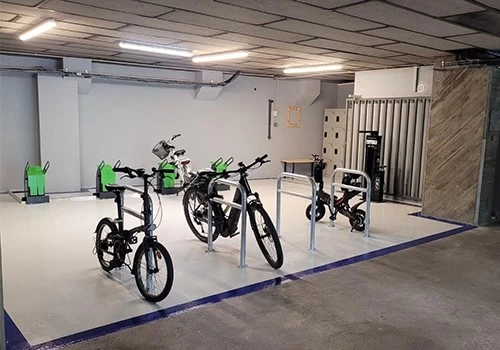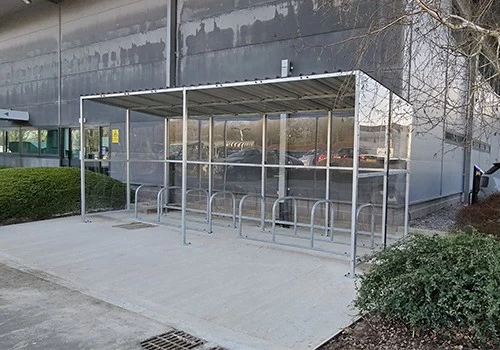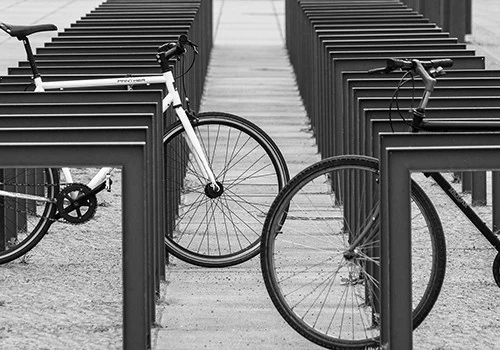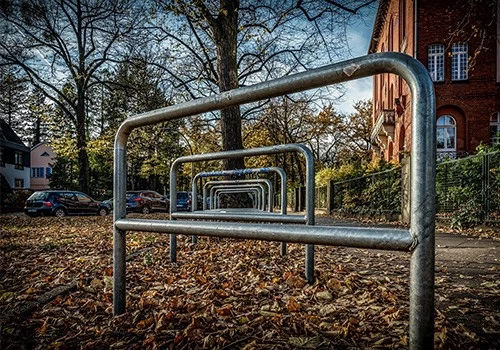Specifications
Model Number : PV-SC-001
Type: Bike parking and storage
Color:Yellow,Black,Green,Red,or Customized.
Style : both indoors and outside
Material : carbon steel
Loading: According to customer need
Size :195*23.2*75cm,200.55*23.2*75cm,or Customized.
Finish: hot-galvanized
Specifications
Model Number : PV-0081-01
Type: Bike parking and storage
Color:silver
Style : both indoors and outside
Material : carbon steel
Loading: According to customer need
Size :Height 1463mm, Depth 1114mm
Finish: hot-galvanized
Model Number : PV-0081-01
Type: Bike parking and storage
Color:Black
Style : both indoors and outside
Material : carbon steel
Loading: 2-10 bikes (According to customer need)
Size :Height 1463mm, Depth 1114mm
Finish: hot-galvanized
Model No.: PV-H1
Size: w605*D400*H330mm
Specification: Round tube:¢16*1.2mm
Finish: Power coated
Net Weight: 1.6 kgs
Packing size:6pcs/ctn
MOQ: 100pcs
Model Number : PV-0024-01
Material : carbon steel/stainless steel
Loading: according customer space size,we can design according the size
Size : W1977*D1130(depend on your parking space)*H2500mm
Finish: Powder coated ,hot-galvanized/electric polish
Packing size :2000*2000*2500mm(40 parking space )
Powder coated ,hot-galvanized/electric polish
Product number:PV-0046-01
Material:carbon steel
Specification:10.2*59*28CM or Customized.
MOQ:100PCS
Port:Shanghai
Trademark:PV
Model Number : PV-0081-01
Type: Outdoor Bike Parking Rack
Style : both indoors and outside
Material : carbon steel
Loading: 2-10 bikes (According to customer need)
Size :170.5*116*148CM
Finish: hot-galvanized
Model Number : PV-0055-01
Type: compact flat pack /slot
Color:black / silver /yellow/optional
Style :Outdoor/indoor
Material : carbon steel/ stainless steel
Capacity : park 6 bikes
Size : L1400*W1054*H840mm
Net weight :38KG
Finish: powder coating / hot galvanized /elctropolishing
Packing size :1490*860*160mm 1pcs/ctn
Product Name: Multi-Capacity Horizontal Two Tier Bike Parking Rack
Material: Carbon Steel
Finish: Powder coated
Post: 80mm * 80mm thickness: 3mm
Steel plate: thickness: 2mm
Dimension: 1325*1890*1830mm
Weight: 370 kg/set
Model: PV-0067-01
Material: stainless steel 304
Pipe: 50 mm* 2.5 mm
Size: 900*700 mm(L*W)
Surface treatment: polishing

In an era of environmental consciousness, cycling has emerged as a key sustainable transportation solution, reducing emissions and easing urban congestion. However, supporting infrastructure must align with eco-friendly principles to avoid contradiction. For manufacturers, sustainable bike racks—crafted with green materials and design—have become essential, meeting demands of environmentally conscious clients while driving industry progress.
Cities worldwide now prioritize cycling in sustainability strategies, with studies showing urban cycling can reduce CO₂ emissions by up to 17% when widely adopted. This shift has increased demand for bike parking, but traditional manufacturing often uses resource-intensive processes. Today’s buyers—municipalities, universities, corporations, and residential complexes—seek products matching their sustainability goals, making eco-friendly bike racks a mainstream necessity rather than a niche option.
Material selection defines sustainable manufacturing, with innovative alternatives replacing conventional options without sacrificing durability.Recycled metals lead the way. Recycled steel uses 70% less energy than virgin steel and cuts emissions by 58%, conserving resources while maintaining strength. Many manufacturers now offer 100% recycled steel or aluminum racks, proving sustainability and durability can coexist.Bamboo composites provide another solution. Bamboo’s rapid growth and regenerative properties make it highly sustainable, while bio-resin composites create weather-resistant, pest-resistant components that enhance urban aesthetics.
Reclaimed wood repurposes timber from deconstructed buildings or waste, reducing landfill waste. Treated with non-toxic preservatives, it creates durable, visually unique racks that add character to public spaces while supporting circular economy principles.Bio-based plastics, derived from renewable resources like corn starch, replace petroleum plastics in components. Some manufacturers use recycled plastic bottles for composites, addressing pollution while delivering versatile, durable solutions.

Sustainable design encompasses the entire product lifecycle, integrating principles that enhance functionality while reducing environmental impact.Modular systems allow flexible configuration, adjusting parking capacity to demand. This reduces overproduction, simplifies installation, and enables easy component replacement—extending lifespan while cutting waste and transportation costs.Space-efficient designs like double-decker, vertical, and wave-style racks maximize capacity in limited areas. These solutions reduce land use needs, ideal for dense urban centers, campuses, and transit hubs.
Durability-focused designs incorporate corrosion-resistant finishes, reinforced joints, and weatherproof materials to extend service life. Minimizing moving parts lowers maintenance needs, reducing long-term resource consumption.Emerging renewable energy integration adds solar panels to power LED lighting, e-bike chargers, or digital indicators. These features enhance user experience while demonstrating commitment to holistic sustainability.
Sustainable bike racks create ripple effects beyond their immediate function, boosting urban sustainability.They encourage more cycling by providing secure, appealing parking—studies show adequate facilities can increase cycling rates by 30%. This reduces car usage, lowering emissions, congestion, and improving public health.These products advance circular economies through recyclability and reusability. End-of-life design ensures materials can be recycled, while take-back programs create closed-loop systems minimizing virgin resource demand.Sustainable production processes further reduce impact, with manufacturers using renewable energy, conserving water, and implementing waste reduction practices throughout supply chains.

Sustainable bike racks balance environmental goals with diverse practical needs.Municipalities seek durable, low-maintenance options aligning with climate plans, requiring cost-effective solutions that enhance public spaces while withstanding heavy use.Educational institutions value racks reflecting their sustainability commitments, needing high-capacity, secure options near buildings that serve as visible demonstrations of institutional values.
Corporations integrate them into CSR and wellness programs, attracting eco-conscious employees, reducing carbon footprints, and lowering parking infrastructure costs while enhancing brand reputation.Residential developers offer them as key amenities for environmentally aware tenants, with sustainability becoming a competitive advantage in housing markets.
Practical implementations showcase sustainable bike racks’ effectiveness across settings.Portland replaced downtown racks with 100% recycled steel modular systems, improving parking while reducing carbon footprint. Resident feedback highlighted how attractive, convenient facilities increased cycling frequency.The University of California, Berkeley installed bamboo composite racks as part of carbon neutrality efforts. The natural aesthetic complemented campus landscapes while withstanding heavy use, with educational signage turning parking areas into sustainability exhibits—boosting campus cycling by 25% within a year.
Amsterdam’s corporate headquarters implemented solar-powered recycled aluminum racks, with panels powering security lighting and e-bike chargers. This initiative increased employee cycling by 40%, reducing parking demand and corporate emissions.
Manufacturers face hurdles in sustainable production that require strategic solutions.Initial cost barriers are offset by lifecycle savings through reduced energy use, maintenance, and access to green incentives. Educating buyers on total cost of ownership—beyond purchase price—demonstrates long-term value.Performance assurance requires R&D to ensure eco-materials meet strength and weather resistance standards, with third-party certifications providing buyer confidence.
Complex sustainable supply chains demand new partnerships and vetting but deliver benefits including reduced disruption risks and enhanced brand reputation.Market education remains essential, with manufacturers using case studies and certifications to build confidence in green solutions.
The industry evolves with innovations enhancing sustainability and functionality.Advanced materials include agricultural waste composites using hemp fibers and rice husks, offering strong, renewable alternatives reducing fossil fuel reliance.Smart technology integration will add usage sensors, digital locks, and data collection capabilities—powered by renewable energy—to optimize efficiency and user experience.Circular design will advance with products engineered for easy disassembly, component replacement, and material recovery, supported by comprehensive take-back programs.
Aesthetic innovation will transform racks into urban art installations, with collaborative designs enhancing public spaces while promoting cycling culture.Policy support will grow, with governments offering incentives and stricter regulations driving investment in sustainable infrastructure as cities pursue ambitious climate targets.

Sustainable bike racks represent the intersection of environmental responsibility and urban practicality. For manufacturers, embracing green materials and design isn't just strategic—it contributes to solving global challenges. These products support cycling growth while embodying sustainability principles, delivering benefits to cities, institutions, businesses, and residents alike. As the industry innovates further, sustainable bike racks will remain essential components of livable, eco-friendly urban environments, proving that infrastructure can both serve practical needs and advance planetary health.